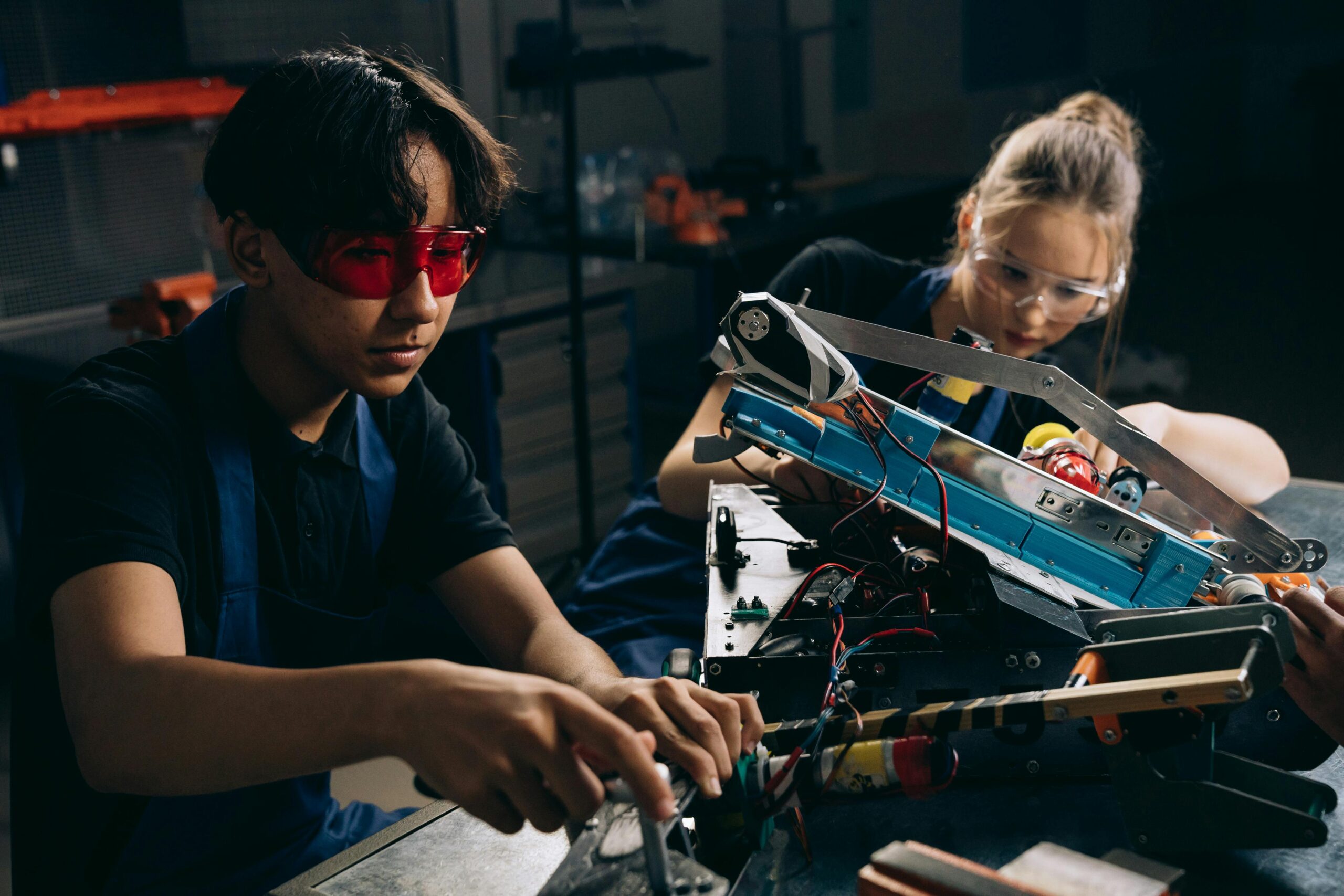Technology is advancing at an unprecedented pace, reshaping how we live, work, and interact. From artificial intelligence (AI) to quantum computing, the future promises innovations that could solve global challenges but also raise ethical, social, and economic questions. Are we ready for what lies ahead? This article explores emerging technologies, their potential impacts, and the steps we must take to prepare for a rapidly evolving future.
Emerging Technologies Shaping the Future
1. Artificial Intelligence and Machine Learning
AI and machine learning are transforming industries by enabling systems to learn, reason, and make decisions. Applications include:
- Healthcare: AI-driven diagnostics, personalized medicine, and drug discovery.
- Business: Predictive analytics, customer service chatbots, and supply chain optimization.
- Daily Life: Virtual assistants, recommendation algorithms, and autonomous vehicles.
Future Potential: By 2030, AI could contribute $15.7 trillion to the global economy, per a PwC report, but risks like bias in algorithms and job displacement require careful management.
2. Quantum Computing
Quantum computers, leveraging quantum mechanics, promise to solve complex problems beyond the reach of classical computers.
- Applications: Drug development, cryptography, climate modeling, and financial forecasting.
- Challenges: High costs, technical complexity, and potential to break current encryption systems.
Future Potential: Companies like IBM and Google aim for practical quantum systems by the late 2020s, but ethical concerns about data security loom large.
3. Biotechnology and Gene Editing
Advances in CRISPR and other gene-editing tools are revolutionizing medicine and agriculture.
- Healthcare: Treatments for genetic disorders, cancer therapies, and organ regeneration.
- Agriculture: Drought-resistant crops and sustainable food production.
- Ethics: Concerns about “designer babies” and ecological impacts of modified organisms.
Future Potential: Biotech could extend human lifespans and eradicate certain diseases, but regulatory frameworks are needed to address ethical dilemmas.
4. Renewable Energy and Green Tech
Technologies like solar, wind, and green hydrogen are critical to combating climate change.
- Innovations: Next-generation batteries, carbon capture, and smart grids.
- Impact: Reducing global carbon emissions to meet Paris Agreement targets.
- Challenges: Scaling infrastructure and managing transition costs for fossil fuel-dependent economies.
Future Potential: The International Energy Agency predicts renewables will account for 50% of global electricity by 2030, but investment and policy support are crucial.
5. Augmented Reality (AR) and Virtual Reality (VR)
AR and VR are merging digital and physical worlds, transforming entertainment, education, and work.
- Applications: Immersive gaming, virtual training, remote collaboration, and virtual tourism.
- Social Impact: Enhancing accessibility but raising concerns about addiction and privacy.
Future Potential: The AR/VR market could reach $1.5 trillion by 2030, per Statista, reshaping how we interact with information and each other.
6. Internet of Things (IoT) and Smart Cities
IoT connects devices to optimize efficiency, from smart homes to entire cities.
- Applications: Traffic management, energy-efficient buildings, and real-time health monitoring.
- Challenges: Cybersecurity risks and data privacy concerns with billions of connected devices.
Future Potential: By 2030, 125 billion IoT devices could be connected globally, per IHS Markit, requiring robust security protocols.
7. Autonomous Systems and Robotics
Self-driving cars, drones, and robotic assistants are redefining transportation, logistics, and care.
- Applications: Autonomous delivery, robotic surgery, and eldercare robots.
- Challenges: Safety concerns, regulatory hurdles, and job displacement in sectors like transportation.
Future Potential: Autonomous vehicles could reduce traffic fatalities by 90%, per McKinsey, but public trust and infrastructure upgrades are needed.
Opportunities of Future Technology
- Improved Quality of Life: AI-driven healthcare and IoT-enabled homes can enhance comfort and longevity.
- Economic Growth: New industries and jobs in tech development, maintenance, and ethics.
- Environmental Solutions: Green tech can mitigate climate change and promote sustainability.
- Global Connectivity: AR, VR, and IoT can bridge geographical divides, fostering collaboration and education.
Challenges and Risks
- Job Displacement: Automation could disrupt 30% of current jobs by 2030, per Oxford Economics, requiring reskilling programs.
- Privacy and Security: IoT and AI raise risks of data breaches and surveillance without strong regulations.
- Ethical Dilemmas: Gene editing and AI decision-making pose moral questions about fairness and accountability.
- Digital Divide: Unequal access to technology could widen socioeconomic gaps, especially in developing nations.
- Environmental Impact: Producing tech hardware (e.g., batteries, chips) generates e-waste and consumes resources.
Are We Ready? Key Areas to Address
To prepare for the future of technology, individuals, businesses, and governments must act proactively.
1. Education and Workforce Development
- Upskilling: Invest in training for AI, coding, and data analysis to prepare for emerging roles.
- STEM Education: Promote science, technology, engineering, and math education, especially for underrepresented groups.
- Lifelong Learning: Encourage continuous education to adapt to evolving job markets.
Action Tip: Use platforms like Coursera, edX, or Khan Academy for affordable tech courses.
2. Ethical and Regulatory Frameworks
- AI Ethics: Develop guidelines to ensure fairness, transparency, and accountability in AI systems.
- Data Privacy: Enforce laws like GDPR or CCPA to protect personal data.
- Biotech Oversight: Establish global standards for gene editing to prevent misuse.
Action Tip: Advocate for transparent tech policies through organizations like the Electronic Frontier Foundation.
3. Infrastructure Investment
- Connectivity: Expand high-speed internet access to rural and underserved areas.
- Sustainable Tech: Fund research into eco-friendly manufacturing and recycling for tech hardware.
- Cybersecurity: Strengthen defenses against hacking and data breaches in IoT and autonomous systems.
Action Tip: Support local initiatives for broadband expansion or green tech startups.
4. Public Awareness and Engagement
- Tech Literacy: Educate communities about AI, IoT, and other technologies to reduce fear and misinformation.
- Inclusive Dialogue: Involve diverse voices in shaping tech policies to address social and cultural needs.
Action Tip: Attend or host community workshops on tech trends and their implications.
5. Personal Preparedness
- Stay Informed: Follow tech news from sources like MIT Technology Review or Wired.
- Adopt Mindfully: Use new technologies (e.g., smart devices) with awareness of privacy settings.
- Financial Planning: Budget for tech upgrades or reskilling to stay competitive.
Action Tip: Set a monthly goal to learn about one new technology through articles or podcasts.
Preparing for the Future: A Practical Plan
Goal: Stay ahead of technological change over the next year.
- Month 1–2: Research one emerging technology (e.g., AI or quantum computing) using reputable sources.
- Month 3–4: Enroll in a free or affordable online course to build a relevant skill, like Python or data ethics.
- Month 5–6: Join a local or online tech community to discuss trends and share insights.
- Month 7–9: Experiment with a new tech tool (e.g., a smart home device or AR app) and assess its impact on your life.
- Month 10–12: Advocate for ethical tech policies by signing petitions or contacting policymakers.
Track Progress: Keep a journal of skills learned, tech adopted, and actions taken to stay engaged.
Scientific and Industry Insights
- A 2023 World Economic Forum report predicts that 60% of workers will need reskilling by 2027 due to automation.
- The International Renewable Energy Agency estimates green tech could create 122 million jobs by 2050.
- Studies from Stanford University highlight that unbiased AI systems improve decision-making accuracy by up to 20% in fields like healthcare.
Conclusion
The future of technology holds immense promise, from solving climate challenges to revolutionizing healthcare and connectivity. However, it also demands preparation to address ethical, economic, and social challenges. By investing in education, advocating for responsible policies, and staying informed, individuals and societies can harness the benefits of technology while mitigating its risks. Start today by learning about one emerging technology or taking a small step toward skill-building. The future is coming—are you ready?
Resources:
Podcasts: The AI Podcast by NVIDIA, Tech Stuff by HowStuffWorks
Websites: MIT Technology Review (technologyreview.com), World Economic Forum (weforum.org), IEEE Spectrum (spectrum.ieee.org)
Books: The Fourth Industrial Revolution by Klaus Schwab, Life 3.0 by Max Tegmark
Courses: Coursera (coursera.org), edX (edx.org), FutureLearn (futurelearn.com)








